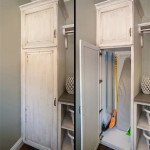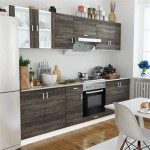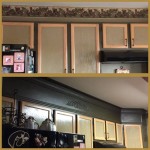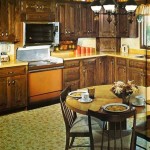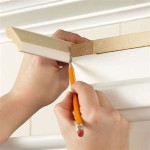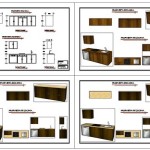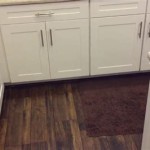Kitchen Cabinet Baseboard Heater: A Comprehensive Guide
A kitchen cabinet baseboard heater is a discreet and efficient heating solution that utilizes the space beneath your kitchen cabinets to deliver warmth. This innovative design seamlessly blends with your cabinetry, creating a streamlined and aesthetically pleasing heating system. While traditional baseboard heaters often protrude from the wall, cabinet baseboard heaters are designed to be hidden away, maximizing your kitchen's space and enhancing its visual appeal.
These heaters offer several advantages over conventional heating systems. They are energy-efficient, providing localized heating only where it's needed, reducing unnecessary energy consumption. Their quiet operation ensures a peaceful environment, unlike noisy fan-based heaters. Furthermore, cabinet baseboard heaters are incredibly safe, featuring built-in safety mechanisms to prevent overheating and accidental burns. They are particularly well-suited for kitchens with young children or pets, providing a safe and reliable heat source.
This article will delve deeper into the unique features of kitchen cabinet baseboard heaters, exploring their installation process, benefits, and considerations for choosing the right model for your kitchen.
Key Features and Benefits of Kitchen Cabinet Baseboard Heaters
Kitchen cabinet baseboard heaters are designed to seamlessly integrate with your existing cabinetry, offering a discreet and aesthetically pleasing heating solution. These heaters leverage the space beneath your cabinets to provide localized warmth, effectively heating the area without impacting your kitchen's overall design.
Here are some key features and benefits that make kitchen cabinet baseboard heaters a desirable choice for home heating:
1. Discreet and Space-Saving Design:
The most striking feature of these heaters is their discreet design. They are designed to fit seamlessly beneath kitchen cabinets, minimizing their visual impact and maximizing your kitchen's available space. This feature is especially beneficial for smaller kitchens where every square inch counts.
2. Energy Efficiency:
Kitchen cabinet baseboard heaters are incredibly energy-efficient. They provide localized heating, delivering warmth only where it's needed. This targeted approach minimizes energy waste compared to conventional central heating systems that heat the entire house.
3. Quiet Operation:
Unlike traditional baseboard heaters or fan-based systems, kitchen cabinet baseboard heaters operate quietly. Their silent operation ensures a peaceful environment in your kitchen, allowing you to enjoy a peaceful and relaxing space. This is especially beneficial for kitchens that double as dining areas or family gathering spaces.
4. Safety Features:
Kitchen cabinet baseboard heaters prioritize safety. They incorporate built-in safety mechanisms such as overheating protection and automatic shut-off, reducing the risk of accidents. These features make them ideal for kitchens with young children or pets, providing a safe and reliable heat source.
Types of Kitchen Cabinet Baseboard Heaters
Kitchen cabinet baseboard heaters come in various types, each offering unique features and benefits. Understanding the different types available can help you choose the best option for your kitchen's specific needs.
1. Electric Baseboard Heaters:
Electric baseboard heaters are the most popular type, known for their simple installation and affordability. They are powered by standard household electricity and typically feature a built-in thermostat for temperature control.
2. Hydronic Baseboard Heaters:
Hydronic baseboard heaters utilize hot water to provide heat. They are more efficient than electric models but require a dedicated hot water system for operation. These are often used in homes with existing hydronic heating systems.
3. Infrared Baseboard Heaters:
Infrared baseboard heaters use infrared radiation to heat objects directly, rather than heating the air. They offer precise temperature control and are particularly effective for warming up specific areas.
Installing a Kitchen Cabinet Baseboard Heater
Installing a kitchen cabinet baseboard heater is a relatively straightforward process that can be done by a homeowner with some basic DIY skills. However, it is essential to carefully follow the manufacturer's instructions and safety guidelines to ensure a safe and successful installation.
1. Planning and Preparation:
Before starting the installation, carefully plan the location of the heater and ensure it is compatible with your electrical wiring and existing cabinetry. You may need to consult an electrician for guidance on electrical wiring requirements.
2. Mounting the Heater:
Securely mount the heater to the wall beneath the cabinets. It is crucial to ensure the heater is level and firmly attached. Use the mounting brackets provided with the heater and follow the manufacturer's instructions.
3. Connecting the Electrical Wiring:
After mounting the heater, carefully connect the electrical wiring. Ensure the power supply is turned off before making any electrical connections. Consult an electrician or qualified professional for any electrical wiring work beyond your comfort level.
4. Testing the Heater:
Once the electrical wiring is complete, turn on the power supply and test the heater. Ensure it is heating correctly and the thermostat is functioning properly.
Considerations When Choosing a Kitchen Cabinet Baseboard Heater
When selecting a kitchen cabinet baseboard heater, it is essential to consider several factors to ensure it meets your specific needs.
1. Heating Capacity:
Determine the heating capacity required for your kitchen, taking into account the size of the space and desired level of warmth.
2. Safety Features:
Prioritize heaters with built-in safety mechanisms like overheating protection, automatic shut-off, and child-resistant controls. These safeguards reduce the risk of accidents and ensure your family's safety.
3. Energy Efficiency:
Choose a heater with a high Energy Star rating to reduce energy consumption and save on utility costs. These models typically offer improved efficiency and lower operating expenses.
4. Noise Level:
Consider the noise level of the heater, especially if you are sensitive to noise or have a small kitchen where the noise might be more noticeable.
5. Budget:
Set a realistic budget and explore available options within your price range. While higher-priced models often offer additional features and energy efficiency, it is crucial to find a balance between price and desired features.
By taking these considerations into account, you can choose a kitchen cabinet baseboard heater that meets your specific needs and enhances the comfort and functionality of your kitchen.

Baseboard Heat Under Cabinets Heating Home Remodeling Heater

Float Cabinet Over Baseboard Heater Heating Covers

Kickspace Heaters 101 Bob Vila

How To Build A Mudroom Wall Kitchen Cabinets Four Generations Makeover Baseboard Heating Home

How To Build Cabinets Over Baseboard Google Search Heating Installing Kitchen Baseboards

Enhance Your New Kitchen With Toe Kick Heaters Boston Somerville

Bookcase Over Baseboard Heat Heating Heater Covers

Heating With Electric Baseboards Integrated Into A Kitchen

Stylish Built Ins For Baseboard Heating

Baseboard Heaters Space Kitchen Cabinets Doityourself Com Community Forums
Related Posts


